In Conversation With Trey Edward Shults & The Cast Of WAVES
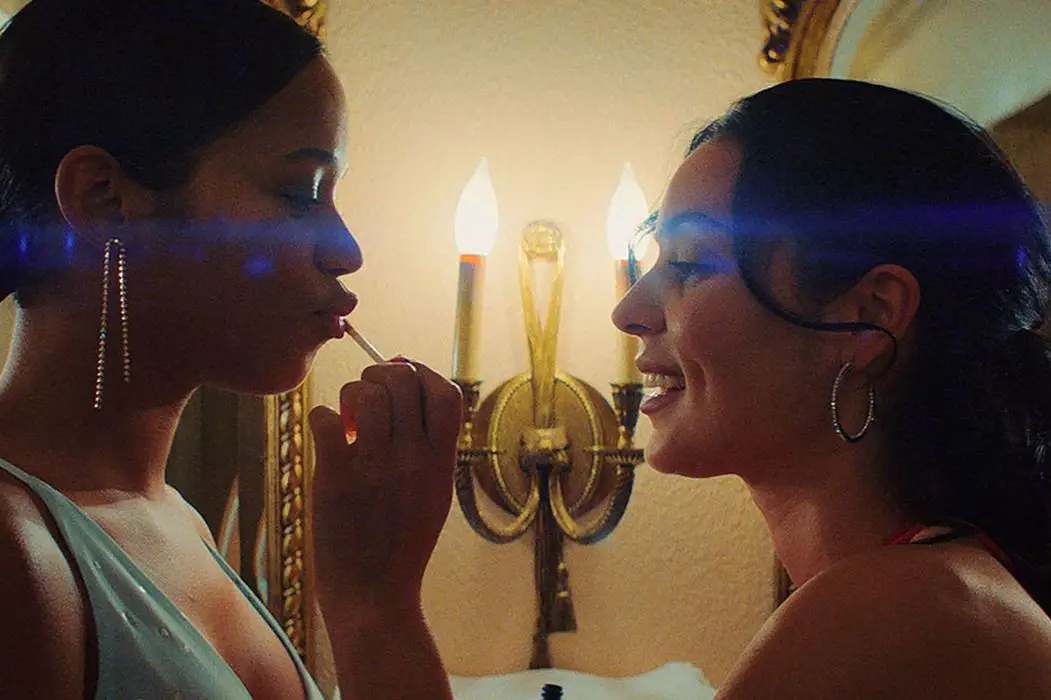
Andrew Young is a freelance writer on film and culture…
Anyone who has ever fallen in love with the movies will know what it is to feel a film. To watch something and give yourself over to it, to have your emotions captured and heightened by the screen before you. It is not just laughing at the funny parts and crying at the sad parts, but being so invested, enamoured or disgusted with this fictional world that its highs and lows are felt more intensely than many in your own life.
Writer-director Trey Edward Shults’ Waves, in all its sprawling, outrageously ambitious glory, is a film to make you feel. It is impossible to predict how each audience member will react to a film, but Waves feels like it has the power to reach inside its audience – to move them, to hurt them, and to provoke a constant feverish intensity of feeling. It is a film with the ability to, weeks after watching, still be burrowing its way deep into your heart and mind. Shults’ film is by no means perfect, but it has a weaponised emotional power that will be remembered long after many less ‘flawed’ films.
To say too much about the plot would be to dampen this power. The core of its vast narrative is the trials and tribulations of a modern American family: pushy father Ronald (Sterling K. Brown), caring mother Catharine (Renée Elise Goldsberry) and their two children, golden boy Tyler (Kelvin Harrison Jr.) and his quieter younger sister Emily (Taylor Russell). The film is split into roughly two halves, one following Tyler and the other Emily. Dividing them is an event that will shape all their lives forever more.
Family Values
There is something troubling about a film with this power; it lingers, it continually makes you relive its emotional crescendos as if you lived them yourself. One must wonder then how the people behind it coped with such emotionally draining work. The answer? They too became a family. Clichéd as it may sound, Harrison Jr, Russell, Goldsberry and Brown talk and behave like a close-knit familial unit. Shults would call them “fam” on set and displays a clear love for his cast – “oh, they’re the best” he announces as soon as they are mentioned.
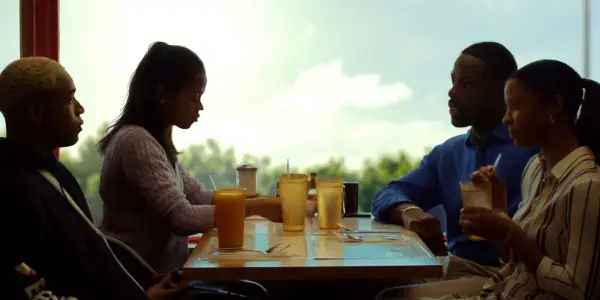
Whether it’s in friendly competition or in discussing their characters’ backstories, these people continually bonded over their shared experience on Waves, to the point where they have a joyful energy and relaxed camaraderie even when doing their umpteenth press junket together. They interrupt and overlap each other when answering questions, coming to life when chatting amongst themselves. It’s all rather hard to transcribe, but well worth it for an audience with people you sense know they have created something special.
Despite their clear affection for each other, shooting Waves never allowed the cast too much time together. With a 35-day shoot and Brown’s This Is Us “day job” schedule to work around, “the fam” had to hit it off quick. “We had one dinner, the four of us with Trey, the night before shooting,” Goldsberry explains. “It was love at first sight for me. I think about them and I feel a tremendous affection for this group of people; they’re just really beautiful people and it’s exciting to be a part of this moment in their lives.” A wholesome warmth fills the room.
“I was so excited to have them as parents,” Russell adds, especially as a fan of Goldsberry’s work in musical mega-hit Hamilton. “The whole summer I was listening to the soundtrack like ‘she’s gonna be my mom!’” As excited as Russell may have been, much of the relationship between Catharine and the children is implied, rather than shown. There is so much going on in Waves, so many plotlines and character relationships, that we sense a complete picture must have been in the actors’ heads if not on screen. Creating a backstory to the family was, Russell acknowledges, a part of the actors’ preparation: “Me and Kelvin talked about it a lot,” she says, adding that everything is written down “in a journal somewhere.”
If Catharine’s role in the family is more subtly conveyed, then it is Brown’s father Ronald who hits the more obvious dramatic beats. A constantly striving person, Ronald pushes Tyler to the max, impressing upon his son the idea that ‘people like us are not afforded the luxury of being average’. “It was a really interesting journey I saw the character go on,” says Brown. “From being one way with his son to being another way with his daughter – and I don’t think he could have been that way with his daughter if the tragedy of the film had not transpired.” The role of father is familiar to Brown from his work as Randall Pearson on This Is Us, but, he says, “I felt like Ronald was very, very different. He’s still a dad and still loves his family, but the prism through which that love moves is very different.”
Two Sides of the Story
There’s a lot of this kind of love in Waves, that which is deeply felt but punctuated with pain and cruelty. Much of the film’s red raw emotion comes from Shults’ decision to continually push our sympathy with these characters and our own grip on morality. To tell such a complex and broad story, Shults took the bold decision to split his film into two distinct halves: Tyler’s perspective, and Emily’s. As Brown points out, this is not just a narrative split but a technical one. There is a “frenetic pacing” to the first half that is contrasted by the “more languid” second, he suggests.
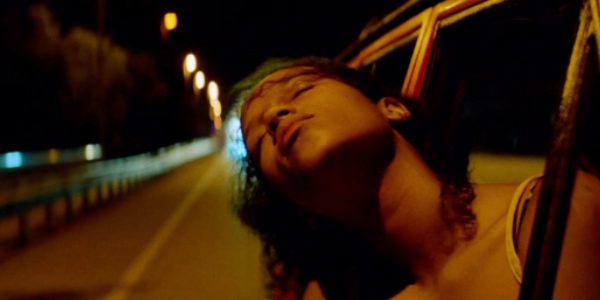
This distinctly-split approach presented the cast with a demanding shoot as, due to filming constraints, Shults explains, they had to shoot “crazy out of order”. “Honestly it was all over the place,” laughs Russell; yet, crucially, she adds: “The first scene we shot was us in the diner.” The ‘diner scene’ is pivotal in the film as one of the few times we see all four family members on screen together. “So the very first scene established a lot of those characters,” says Goldsberry. “Not just the father and the son, but the mother and the daughter, and even the husband and the wife.” It was, she suggests, very “smartly orchestrated by Shults.
Nevertheless, the technical and emotional dissonance between the two halves gave the actors a difficult schedule. “There was one weekend where we [Tyler and Ronald] were going at it,” explains Brown. “Where he knocks me down, where he screams at his mom; there was another scene that got cut where we’re screaming at each other. And then the next day Taylor and I shot the fishing scene.” The ‘fishing scene’ is one of the film’s quietest and most tender, where Shults shows admirable restraint in his filmmaking. “I was tired from shooting the stuff with Kelvin,” Brown continues. “But then I was tired in a whole other way after shooting with Taylor.” Goldsberry adds a “he was so proud of you” aside to Russell, and again the respect and admiration among the cast is palpable. “It had its own set of challenges,” Brown reiterates. “But it was also exhilarating.”
They were challenges that Shults saw as necessary too, with the split-narrative approach being “embedded in the DNA of the thing for a long time”. In broad terms, he says, “the movie’s yin and yang, it’s highs and lows, it’s a lot of dichotomies in life and how they come together to make one.” The brother-sister dynamic between Tyler and Emily gave Shults “a lot of field to mine” too. Kept apart for a lot of the film, we understand their relationship more as two individuals than as a pair, with the film taking care to giving each one their due on screen. Waves, with all of life’s challenges that it shows, is an ambitious attempt to look on love and cruelty from all sides, whilst always keeping it in the family.
In the plotlines between Tyler and girlfriend Alexis too, Shults strived to make sure the messy complexities of human relationships didn’t get lost in his narrative approach of “narrowly focussing” on Tyler for so long. “The tricky thing is that almost everything in Tyler’s half is through his eyes and his point of view and you only have specific moments to make sure that Alexis is also a nuanced, complex person,” says Shults. He points out that having “incredible actress” Alexa Demie, of TV’s Euphoria, helped “bring it to a whole new level” too.
Weight of the World
It is in this relationship and in Tyler’s others, that the film finds its most stunning moments. As an injury threatens his all-important sporting season and thus his golden boy image and perfect-son burden, Tyler begins to crumble as familial and relationship pressures pile on his already fragile mindset, leading to a series of increasingly bad decisions. Through it all, we consistently have a degree of sympathy for Tyler, or at least Shults hopes we do: “If you don’t, we’ve failed.”
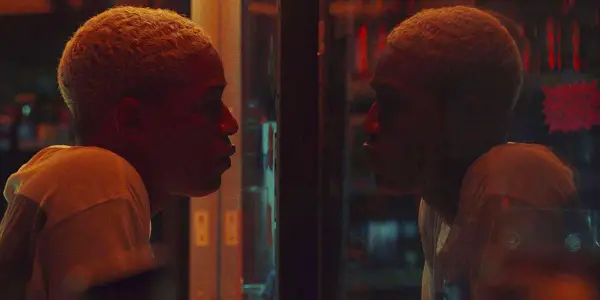
The burden of creating such sympathy fell largely on Harrison Jr. as Tyler but, he says, “What I wasn’t worried about was that I’m a good person and at the end of the day he is too. I don’t have to work hard towards showing his humanity because he is a human being.” He thought how, as Tyler, “I don’t know how to use my words a lot of the time, I don’t know how to communicate.” This lack of communication proves crucial as Tyler faces “the struggles of coming of age.” Surrounded by great performances from all those around him, Harrison Jr. has managed stand out by finding this humanity in Tyler and become one of the film’s big talking points, extending to a recent nomination for a BAFTA Rising Star Award.
For Shults, it was Harrison Jr. who was the key all along, writing the script with him in mind. Whilst Shults gushes about his entire cast – “they’re incredible human beings that are amazing talented and it’s some of the best collaborations and experience I’ve ever had in my life” – he acknowledges that “it all started with Kelvin and grew out from there”. The idea for Waves had been “brewing” for some time but it was only when working with Harrison Jr. on It Comes at Night that the story moved beyond “broad strokes” and took flight. Tyler, then, is not Shults’ creation alone and Harrison Jr. seems to have relished their second collaboration together. When asked what specific strand of the family saga drew him in his answer is clear: “Trey”.
Style and Substance
Hearing the affection director and cast have for one another is infectious, conjuring a picture of what an ideal movie set should be like. This close relationship and respect amongst cast and director is well-suited to the film’s status as a ‘serious family drama’. That label, with all its hefty thematic weight, implies an exceedingly heavy, potentially dry work. That it may be, but Waves has another string to its bow, that of fast-paced, luscious filmmaking. Shults brings an aesthetic vigour and invention to Waves that matches, even exceeds, the grand confidence and ambition of the story it tells, holding nothing back in its attempt to communicate real human feelings to its audience.
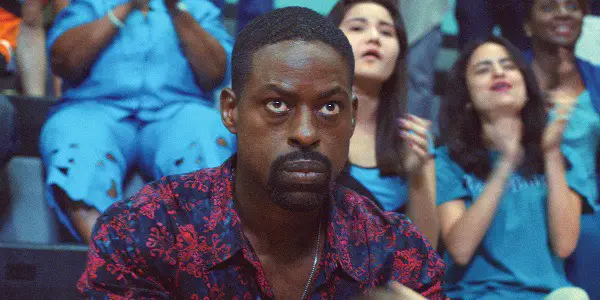
Shults’ style is often dynamic and frenetic, helping to create an almost horror-like experience for the viewer as the drama reaches fever pitch. “It was kind of like doubling down on an approach Drew [Daniels, Shults’ regular cinematographer] and I started with Krisha, my first movie, in making this big, very subjective, immersive experience through the characters,” Shults says. “Whatever the camera’s doing, it’s all coming first from Tyler and then from Emily and putting you in their shoes and taking you through it.”
His directorial style is something Shults acknowledges there must have been “a million influences” on, but for Waves’ individual approach, inspiration came from outside the world of film. “Life experience, Florida and music were the main things I was drawing on,” Shults explains, seeming particularly happy to dive into his film’s musical approach: “The spirit of it is like a soundtrack film, in the vein of Boogie Nights, Goodfellas and Dazed and Confused.” This extended to Shults’ writing process, with specific songs written into the script so “you could play it as you were reading”.
Music would play on set frequently in South Florida where “music is everywhere”, sometimes from the soundtrack, sometimes whatever the actors wanted. Even the camera operators were sometimes played music that fitted the mood of the scene so that they would “vibe with it”, which Shults and Daniels would then match in the “grammar” of the film. Most importantly, however, the music choices had to be “honest to Tyler and Emily and also the movie as a whole”, allowing Shults to find the beating heart running through his film. “You could separate the playlist and play it in order like a mixtape and there’s a narrative being told with it.”
In person Shults is relaxed, young and athletic-looking, a far cry from the tortured-auteur image his film might conjure. Yet the news of the meticulous soundtracking of the film comes as no surprise. Waves plays like somebody’s ‘vision’, albeit a vast and messy one. It has so much pain and humanity on the screen that it feels like its creator’s emotional exorcism. It is, therefore, something to really experience, to witness. Shults’ distinct audiovisual approach to pace, colour and music cries out to be seen in the cinema.
The far-reaching scope of Waves’ story suggests that a mini-series might have been well-suited to the material but in reality only the big screen experience could do it justice. Sterling K. Brown, well-versed in TV from This Is Us, American Crime Story and a scene-stealing guest spot on Brooklyn Nine-Nine, has the same idea. “I go back behind video village a lot just to see what the camera’s capturing,” he says. “And when I saw what the camera was capturing on this, I would get excited because they had such an eye for colour and the lushness of the whole thing; the stuff he does with the water is amazing. So I had a feeling that it was going to be something beautiful to watch. Even when you read the script, you have a feeling that it’s going to be something beautiful to watch.”
Waves is indeed packed with beauty, even at its most upsetting. With grace and constant style, it grabs your heart, throws it around a bit, stomps on it, and then revives it. The resulting emotion comes somewhere between exhaustion and elation. “I get people coming up to me a lot and going: ‘so Waves– why ‘Waves’?” says Brown. “There is a lot going on in the movie, and even when you read it, you’re sort of left with a feeling. I can’t articulate what the sum total message is, but I’m left with this feeling that sort of washes over you.” Whatever that elusive, bone-deep feeling is, you will feel it, and you may never forget it.
How did you respond to Waves? What was the last film that moved you deeply? Let us know in the comments!
Does content like this matter to you?
Become a Member and support film journalism. Unlock access to all of Film Inquiry`s great articles. Join a community of like-minded readers who are passionate about cinema - get access to our private members Network, give back to independent filmmakers, and more.
Andrew Young is a freelance writer on film and culture from Manchester, UK. If you like his writing, Andrew also runs a more informal film website at reeltime.blog













